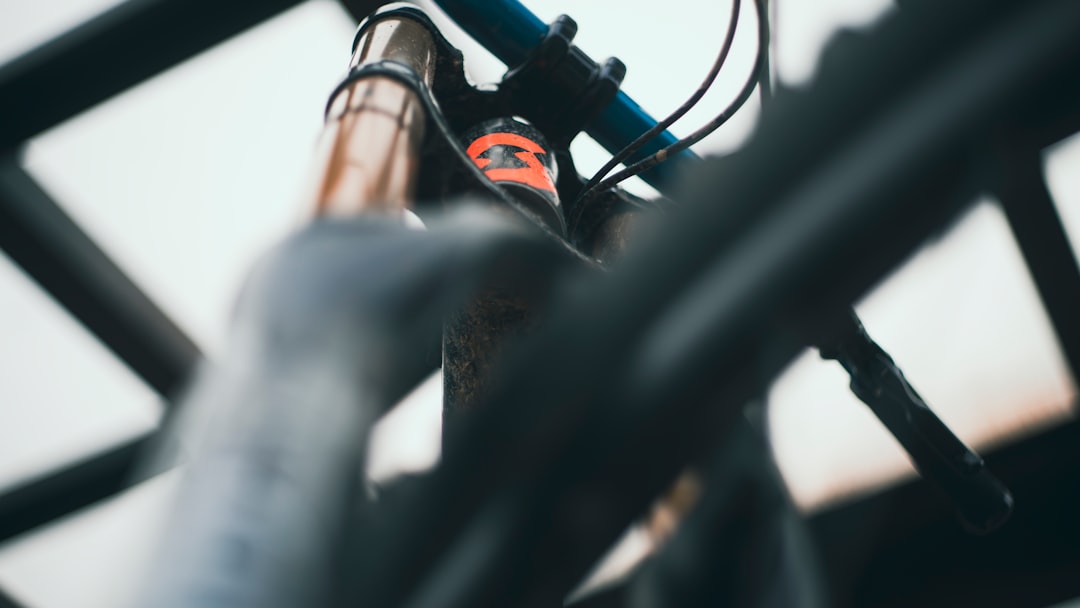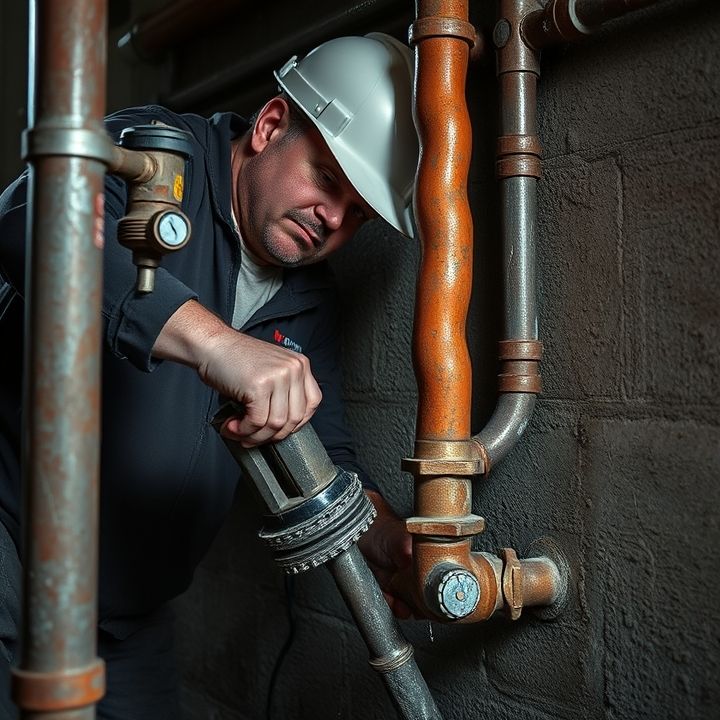Table of Contents
- Introduction
- Frozen pipes due to extreme weather conditions
- Poor installation or installation mistakes
- Corrosion and deterioration of aging pipes
- High water pressure causing stress on pipes
- Ground movement or shifting soil
- Tree root intrusion affecting underground pipes
- Freezing and thawing cycles impacting water lines
- Impact damage from construction or landscaping activities
- Conclusion
- Frequently Asked Questions
Introduction
Pipe bursts can turn a serene home into an unexpected waterlogged disaster in seconds. The sudden onslaught of water not only creates immediate chaos but can also lead to significant structural damage and costly repairs. Understanding the underlying causes of these ruptures is crucial for homeowners and property managers alike. From drastic temperature fluctuations to the inevitable wear and tear of aging pipes, the reasons behind pipe bursts are as varied as they are alarming.
In this article, we will delve deep into the top causes of pipe bursts and arm you with the knowledge necessary to prevent such catastrophes from occurring in your home. By unveiling the pressure that leads to these explosive failures, you’ll gain insights that not only raise your awareness but can potentially save you thousands in damages. Are your pipes at risk? Let’s find out!
Frozen pipes due to extreme weather conditions
Frozen pipes are a common issue during extreme weather conditions, especially in areas that experience significant drops in temperature. When water inside a pipe freezes, it expands, creating pressure within the pipe. This pressure can lead to the pipe bursting, resulting in potentially severe water damage when the ice thaws.
Extreme weather, particularly in winter months, can cause temperatures to plummet to levels that lead to freezing. Pipes located in unheated areas, such as basements, attics, or exterior walls, are more susceptible to freezing because they are exposed to colder air.
Preventing frozen pipes involves proper insulation, maintaining a consistent temperature in the home, and, in some cases, allowing faucets to drip to keep water moving. Homeowners should be particularly vigilant during periods of extreme cold and take proactive measures to protect their plumbing systems. Being aware of the signs of freezing, such as reduced water flow or unusual noises in the plumbing, can help mitigate the risk of a burst pipe.
Poor installation or installation mistakes
One of the most common causes of pipe bursts is poor installation or mistakes made during the installation process. Proper installation is critical to ensure that pipes are connected securely and can handle the water pressure in the system. When pipes are improperly fitted or joints are not sealed correctly, it can lead to leaks and eventually bursts.
Additionally, using the wrong type of fittings or piping materials can compromise the integrity of the plumbing system. For instance, plastic pipes may not withstand high temperatures if installed in hot water systems, while using inadequate supports can cause pipes to sag and create stress points.
Another common mistake is neglecting to account for the thermal expansion and contraction of materials. Pipes that are not allowed to move freely can experience stress that leads to cracking or bursting.
To avoid these issues, it is essential to hire a qualified plumber with experience to ensure that the installation is done according to industry standards, reducing the risk of future pipe failures.
Corrosion and deterioration of aging pipes
Corrosion and deterioration of aging pipes are significant contributors to pipe bursts. Over time, pipes made of metal can become susceptible to rust and corrosion due to exposure to water, chemicals, and varying temperatures. This degradation weakens the structural integrity of the pipes, making them more likely to fail under pressure.
In addition to metal pipes, aging plastic pipes can also suffer from deterioration, particularly when exposed to ultraviolet (UV) light or harsh environmental conditions. As pipes age, the materials they are composed of can become brittle and lose their flexibility, increasing the risk of cracks and breaks.
Furthermore, the accumulation of minerals and sediment inside pipes can lead to blockages, causing an increase in pressure and further stress on the pipe walls. Regular inspections and maintenance are vital to identify signs of corrosion and deterioration before they result in catastrophic failures and significant water damage. This preventive approach can save homeowners and businesses from costly repairs and disruptions.
High water pressure causing stress on pipes
One common cause of pipe bursts is high water pressure, which places excessive stress on plumbing systems. When water pressure exceeds the recommended levels, it can lead to various plumbing issues. Most residential systems are designed to handle pressure between 40 and 60 psi (pounds per square inch). When the pressure surpasses this range, the risk of damage increases significantly.
High water pressure can result from several factors, including issues with the municipal water supply, improper installation of pressure-reducing valves, or malfunctioning pressure regulators. Over time, this added stress can weaken pipes, leading to leaks or even complete ruptures.
Older pipes, particularly those made from materials like galvanized steel or lead, may be more susceptible to damage under high pressure. As these pipes corrode and weaken, the likelihood of bursting increases. Homeowners should regularly monitor their water pressure to ensure it remains within safe limits and address any issues promptly. Managing high water pressure is crucial for maintaining the longevity of plumbing systems and preventing costly damage.
Ground movement or shifting soil
Ground movement or shifting soil is a significant factor that can lead to pipe bursts in residential and commercial plumbing systems. This movement can occur due to various reasons, such as natural settling of the earth, earthquakes, or even heavy rainfall that saturates the ground. As the soil shifts, it can exert pressure on underground pipes, causing them to crack or break.
In regions with expansive clay soils, the ground can swell when wet and shrink when dry, creating dynamic shifts that impact buried pipelines. Additionally, construction activities can disturb the soil, leading to further ground movement and increasing the likelihood of damage to existing plumbing systems. The vulnerability of pipes also depends on their material; older, brittle materials may be more susceptible to failure than modern, flexible options.
Therefore, understanding the relationship between ground movement and pipe integrity is crucial for homeowners and builders alike. Regular inspections and the use of appropriate trenching techniques can help mitigate the risks associated with shifting soil and preserve the longevity of plumbing infrastructures.
Tree root intrusion affecting underground pipes
Tree root intrusion is a common issue that can significantly affect underground pipes, leading to various plumbing problems. As trees grow, their roots search for water and nutrients, often extending towards nearby underground pipes. This can lead to roots penetrating the pipes, causing blockages, leaks, and even bursts.
Roots are particularly attracted to pipes that have leaks or cracks, as the moisture present invites their growth. This intrusion can occur in any type of pipe, but it is more common in older clay or cast iron pipes that may be more susceptible to damage. Once roots infiltrate a pipe, they can create dramatic pressure changes within the system, leading to structural failures.
Homeowners should be aware of the signs of tree root intrusion, which can include slow drains, gurgling sounds from plumbing fixtures, or unusually lush vegetation above the ground. Regular inspections and proactive measures, such as root barriers or pipe maintenance, can help mitigate the risks associated with this natural phenomenon.
Freezing and thawing cycles impacting water lines
Freezing and thawing cycles represent a significant threat to water lines, particularly in colder climates. As temperatures drop, the water within the pipes can freeze, expanding in volume. This expansion puts immense pressure on the walls of the pipes, which can lead to cracks or ruptures. When the weather warms up and the ice thaws, the pressure is relieved, but the damage may have already occurred, leaving the pipes vulnerable to leaks.
It is not just the freezing temperatures that pose a risk; the transition between freezing and thawing can be equally damaging. Repeated cycles of freeze and thaw can lead to fatigue in the pipe structure, making them more susceptible to breaks. Homeowners in areas that experience these cycles should take preventive measures, such as insulating exposed pipes and allowing a slow drip of water during extremely cold weather. Understanding the impact of these cycles on water lines is essential for maintaining the integrity of plumbing systems.
Impact damage from construction or landscaping activities
Impact damage from construction or landscaping activities is a significant cause of pipe bursts that can lead to costly repairs and inconveniences. During construction, heavy machinery such as excavators, backhoes, and bulldozers are often used, which can inadvertently strike underground pipes. This impact can weaken the structural integrity of the pipes, making them more susceptible to bursts under pressure.
Similarly, landscaping activities that involve digging, planting, or earth moving can disturb buried pipelines. Even minor digging can compromise the protective layers surrounding the pipes, leading to cracks or breaks.
Moreover, the vibration generated from construction equipment can also affect the surrounding soil and materials, causing pipes to shift or settle in ways that create stress points. This is particularly concerning in areas with older plumbing systems that may already be fragile.
As a preventive measure, it is crucial for contractors and landscapers to be aware of the location and condition of existing pipe systems before commencing any work. Additionally, employing proper tools and techniques can help mitigate the risk of impact damage and preserve the integrity of underground pipes.
Conclusion
In summary, understanding the top causes of pipe bursts is crucial for homeowners and property managers alike. Frozen pipes, poor installation, corrosion, high water pressure, shifting soil, tree root intrusion, and repeated freezing and thawing cycles are significant contributors to plumbing failures that can lead to costly damage and disruptions. By staying informed about these potential issues and taking proactive measures—such as regular inspections, proper insulation, and timely repairs—you can protect your plumbing system and enhance its longevity. If you suspect any problems or are in need of expert assistance, don’t hesitate to reach out. For immediate plumbing support, call 573-555-2121 today and ensure your home remains safe and comfortable.

